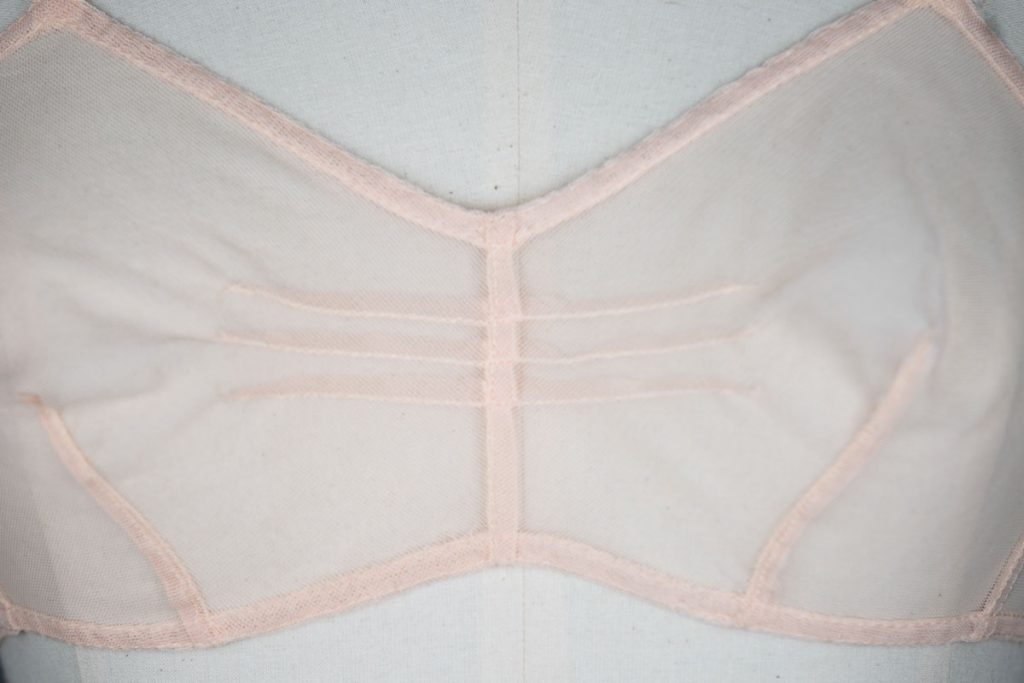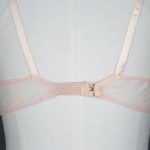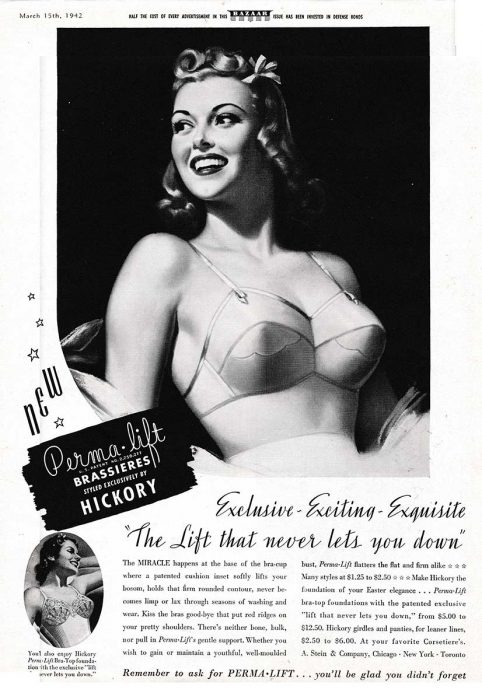The development of new synthetic fibres was key at this time. Nylon was introduced by Du Pont in 1939 and was initially used by hosiery and brassiere manufacturers in the United States, a country not yet involved in the Second World War. Interestingly, the name nylon was never patented by Du Pont and it was introduced as a generic fibre at its launch. By 1940, nylon lingerie was selling as quickly as it could be produced, despite the fact that it was as expensive as pure silk underwear. The initial success of nylon was probably due to Du Pont’s clever marketing of it as an up-market high-fashion fibre from the start. However, the benefits were not simply a marketing ploy as nylon was strong, hardwearing, lightweight and easy to care for.
Although less common in bras than nylon, polyester was also developed around the same time. Susannah Handley states in her book Nylon: The Manmade Fashion Revolution that it was Calico Printers Association in Accrington, Lancashire who made the first test tube filament of polyester in 1941. The rights were then sold to Du Pont (who branded it Dacron) and ICI (branded Terylene) in 1946. Once again, brassiere manufacturers had trouble adjusting to working with these new fabrics. Farrell-Beck and Gau report that ‘new fibers required handling different to the 1920s lingerie standbys of silk, cotton, rayon, and acetate’ thus making the updating of skills and machinery essential.










